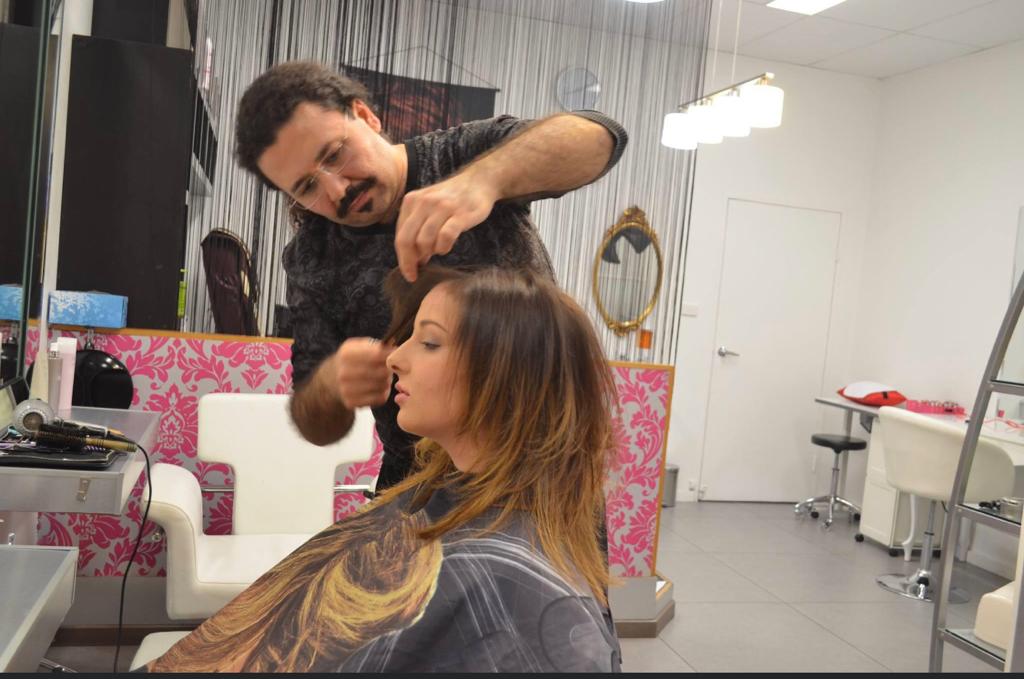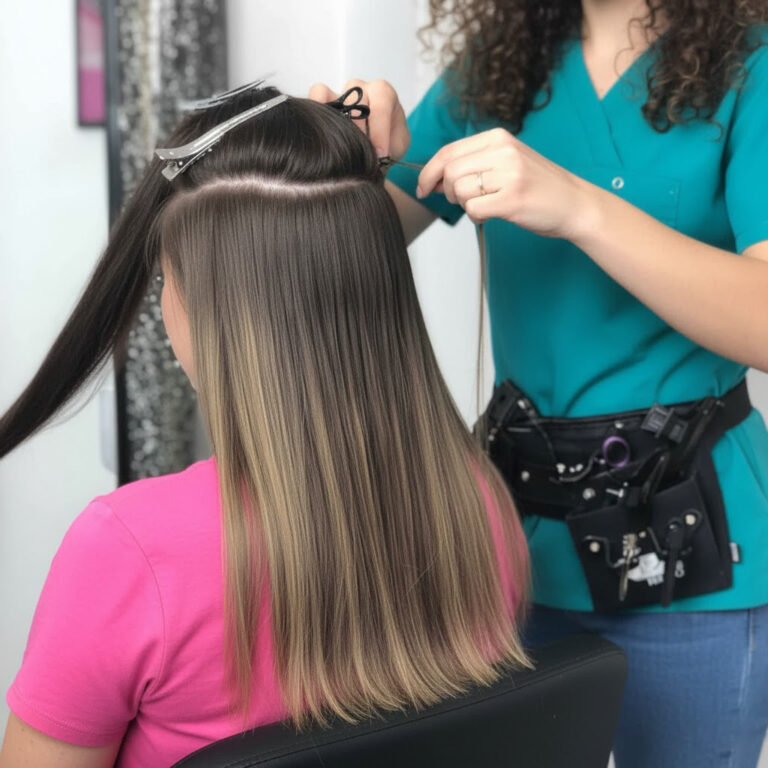Expert Guide to a Seamless, Natural Look
If you’ve found yourself pausing in front of the mirror, wondering if tape‑in hair extensions can work on short hair — you’re in the right place. We’re here to guide you through every detail: from whether it’s possible, what to consider in terms of hair length and texture, how to apply and blend properly, and how to maintain the look so it appears completely natural.
Why Tape In Hair Extensions Are a Strong Choice for Shorter Hair
Tape in extensions are increasingly popular for short hair, and there are very good reasons for this:
- They lie flat against the scalp, making them less bulky and more discreet than some other methods.
- Because of their adhesive sandwich style (two tape tabs around a thin section of your hair), they distribute weight more evenly and can be gentler on shorter, weaker hair.
- Tape in hair extensions can be applied relatively quickly and removed or reused, making them a flexible option if you use them for special occasions or transitional styles.
For those with shorter hair who would love extra length, volume or just a temporary change, tape-ins offer one of the most viable options — if done carefully.
“Short Hair” Defined: Minimum Length & Hair Type That Works
When it comes to short hair and tape in hair extensions, the first key question is: how short is too short?
Minimum Length Recommendations
- Many stylists suggest that a minimum of about 3 inches (≈ 7.5 cm) of natural hair is needed for proper placement of tape in hair extensions.
- More recent expert guides recommend 4–6 inches of natural hair length before going ahead, to allow adequate blending and anchorage.
Hair Type and Condition Considerations
- Fine or thin hair: tape in hair extensions can still work, but you’ll need lighter/more delicate extensions and very precise placement so you don’t overload the roots.
- Very short (buzzed or nearly shaved) hair: Probably not suitable for full-length tape-ins because there’s not enough base hair to secure the tape properly or hide the tabs.
7 Amazing Benefits of Tape-In Hair Extensions You Should Know
Placement & Blending Strategies for Natural Results on Short Hair
Even if your hair meets the minimum length, achieving a natural look with tape-ins on shorter hair requires strategic technique and professional finesse.
1. Sectioning & Placement
- Place the tape-in wefts just below your crown and mid-head, rather than right at the top hairline. This gives your natural shorter layers some coverage over the tape tabs.
- Use slightly thinner subsections of hair when sandwiching the tape if your layering is short — this prevents bulking or the appearance of “stacking”.
2. Matching Length & Texture
- Keep the extension length moderate—don’t leap from a very short crop to 24 inch hair overnight; the heavier and longer the extension, the more stress on your natural hair and the harder it will blend.
- Match hair texture (straight, wavy, curly) and colour as closely as possible. Mismatch makes the tape-ins obvious.

3. Customising & Styling for Blend
- After placing the wefts, have your stylist cut and texturize the extensions so they blend with your natural shorter layers (especially important on short hair where the layers vary significantly).
- Waves or curls often help hide the tape tabs and variation in lengths — adding movement makes the join less discernible.
4. Avoiding Visible Tape, Bulking & Tension
- Avoid placing wefts in very thin, top-crown regions unless you leave sufficient natural hair to cover them. Otherwise the tape edge may show or feel uncomfortable.
- Use lighter weight extension strands if your natural hair is fine or short, to reduce tension and risk of damage.
- Be cautious about high ponytails or slicked-back styles when the hair is short and extensions are placed — the junction may show.
Maintenance, Care & Lifespan: Keeping the Look Flawless
Your job isn’t done once the tape-ins are applied. With shorter hair + extensions, you’ll need careful maintenance for a seamless look and to protect your natural hair.
Maintenance Checklist
- Washing & product use: Use sulfate-free, extension-safe shampoos and conditioners. Avoid applying conditioner or heavy oils near the tape tabs (they can weaken adhesive).
- Brushing: Use a loop-brush or specialized extension brush. Start from mid-lengths and ends, hold the roots to avoid excess tension.
- Styling heat: You can style with heat, but avoid applying direct heat on the tape tabs themselves (glue/adhesive can soften).
- Maintenance appointments: Most stylists recommend a revisit every 6–8 weeks for re-positioning, resurfacing the tapes, and checking your natural hair health.
Special Considerations for Short Hair
- Because your natural hair is shorter, the growth-out line will show sooner; you may need more frequent checks to keep the look clean.
- Avoid heavy or bulky styles that may pull on your shorter layers — this can expose the base of the tape or cause excess stress.
- Sleep with your hair in a loose braid or silk bonnet to minimize tangling and prevent the tape from shifting overnight.
Pros & Cons of Using Tape-Ins on Short Hair
The Advantages
- Instant length & volume with a relatively flat, invisible bond.
- Faster and less invasive installation versus some heavier extension methods.
- Reusable options: many premium tape in hair extensions sets can be removed, re-taped and reused if maintained well.
- Good transitional option: if you’re growing out short hair, tape-ins let you maintain length while your natural hair catches up.
Balayage vs. Ombre: Which One Suits You?
The Drawbacks
- Tape in hair extensions Not ideal if hair is extremely short (<3″) — risk of visible tabs, poor anchorage, or slippage.
- Requires maintenance: cleaning, re-positioning, careful product use.
- Can be more challenging to blend on very layered or textured short cuts — precision is vital.
- If your natural hair is damaged, fragile or undergoing treatment frequently, the added weight could exacerbate issues.
Final Verdict: Is Tape-In Right for Your Short Hair?
In short: yes, absolutely, provided your hair meets the minimum length (around 4–6 inches), your stylist uses the right technique, and you’re committed to proper blending and maintenance.
If you’re working with a very short pixie or buzz cut, you may want to explore alternatives (shorter wefts, clip-ins or wigs) instead of full-length tape-ins — but for most cropped styles and short bobs, tape-ins can deliver a beautiful, natural-looking transformation.
Choose wisely, partner with an experienced stylist, and you’ll enjoy the benefits of length and volume without compromising the natural look or health of your hair.


